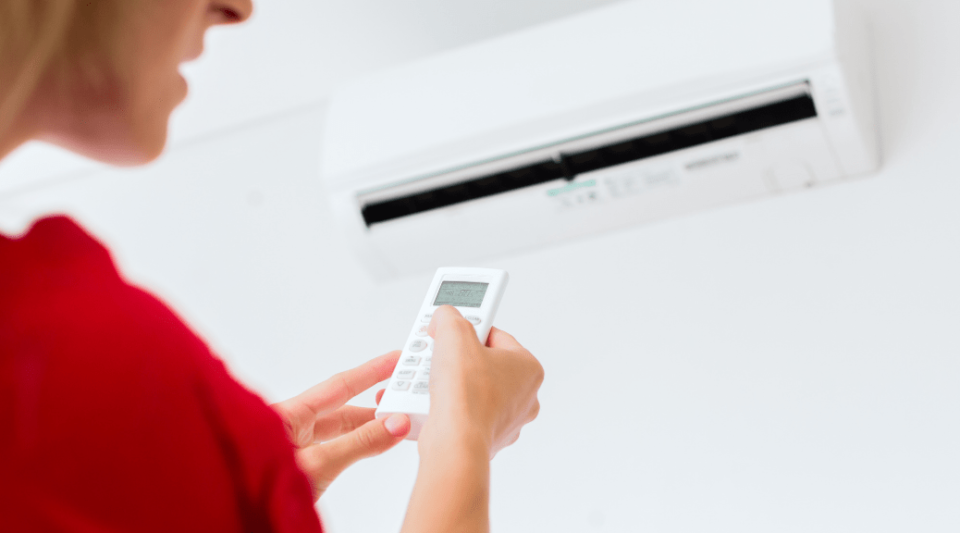Are you also looking to reduce energy bills without sacrificing comfort? Many Adelaide homeowners are asking what temperature to set air conditioner systems for optimal efficiency. And it’s a smart question.
With long, dry summers and chilly winter nights, your air conditioning works overtime. But that doesn’t mean your power bill has to spike. A few adjustments can go a long way.
In this guide, we’ll explore simple, practical ways to reduce energy usage, stay comfortable, and make the most of your energy efficient reverse cycle air conditioner – starting with temperature settings.
Why Air Conditioning Efficiency Matters in South Australia
Heating and cooling accounts for roughly 40% of household energy use, according to Energy.gov.au. And with electricity prices on the rise, smarter usage makes a big difference.
So, if you’re wondering how much does it cost to run an air conditioner, here’s a clue – the higher the temperature gap between indoors and outdoors, the harder your system works.
That’s why choosing the right setpoint is step one.
What Temperature to Set Air Conditioner Systems in Summer
The number is 24°C to 26°C.
That’s the recommended aircon temperature for cooling, according to Australian government guidelines.
Every degree cooler than 24°C can increase your cooling cost by up to 10%. So, while 19°C might feel refreshing, it’s a shortcut to higher bills.
Here’s the sweet spot:
- 24°C to 25°C – Most energy-efficient range for Adelaide summers
- Set and forget – Avoid the temptation to drop it too low
- Use ceiling fans – They help circulate cool air, reducing the need to lower the temperature
It’s also important to use “Cool” mode – not “Auto” – so your system doesn’t accidentally flip to heating during cooler nights.
What Temperature to Set Air Conditioner in Winter
Winter in Adelaide may not be snowy, but it gets cold enough to need heating – especially overnight.
In winter, the best setting is:
- 18°C to 20°C – Ideal for reverse-cycle heating
- Avoid heating above 21°C – Your power bill climbs quickly beyond that
Using heat mode in AC efficiently can reduce power usage by up to 30%. Just keep the thermostat steady and resist frequent adjustments.
Reverse-cycle systems are among the most efficient forms of electric heating. But only when used thoughtfully.
Other Temperature-Saving Tips
Optimising your setpoint is great. But if your home isn’t prepared, your system will still struggle. Here’s how to help it out.
1. Seal Doors and Windows
Drafts let cooled or heated air escape. Use door snakes, window seals, and weatherstripping to trap conditioned air where it belongs.
2. Close Off Unused Rooms
Why cool or heat rooms you’re not using? Shut doors and vents in spare rooms to concentrate airflow where it’s needed.
3. Clean Your Filters Regularly
Dirty filters force the system to work harder. Clean or replace filters every three months – or monthly in peak seasons.
4. Use Curtains or Blinds
During summer, keep blinds closed during the day to block heat. In winter, open them during daylight to let the sun warm your space naturally.
5. Invest in Insulation
Good ceiling and wall insulation can slash heating and cooling loss by up to 45%, according to YourHome.gov.au.
6. Book Regular Servicing
Even the best system loses efficiency without maintenance. That’s where trusted air conditioning services come in handy.
A yearly tune-up checks refrigerant levels, cleans coils, and ensures your thermostat works properly.
Choosing an Energy Efficient Reverse Cycle Air Conditioner
Not all systems are created equal. If you’re shopping for a new unit, look for:
- High star rating – More stars = better efficiency
- Inverter technology – Adjusts output without cycling on and off constantly
- Zoning capability – Only cool or heat areas you actually use
Need help finding the right fit? The Air Conditioning Adelaide team at REQ Refrigeration and Air Conditioning are local experts in system design, installation, and upgrades tailored to South Australian homes.
FAQs: Energy-Saving and Air Con Use
What is the best temperature for aircon if I’m home all day?
Stick to 24°C in summer and 20°C in winter. If you’re sitting still (like working from home), aim for comfort without overcooling or overheating.
How much does it cost to run an air conditioner per hour?
A standard split system can cost between 25 to 60 cents per hour depending on size, setpoint, and usage patterns. Reverse-cycle units are typically more efficient than electric heaters.
What if I’m only using the bedroom unit?
Great move. Cooling or heating smaller zones is more efficient than trying to condition the whole house. Just remember to shut the door and keep the space sealed.
When to Call in the Pros
Still sweating or freezing despite a smart setpoint? Your unit might need attention.
If your system:
- Cycles frequently
- Doesn’t reach the set temperature
- Blows warm air in cooling mode
- Smells odd or rattles loudly
…it’s time to call a technician.
Even small issues can lead to higher running costs or system failure if left unchecked.
That’s why Adelaide homeowners trust REQ’s air conditioning services for honest advice and quality workmanship.
Final Thoughts
If you’ve ever wondered what temperature to set air conditioner systems for comfort and savings – now you know.
Small changes make a big difference. The right temperature, a sealed home, and smart habits all add up to lower bills and longer system life.
And when in doubt? Call your local pros at REQ Refrigeration and Air Conditioning. They’ll keep your system running like a dream – so you can stay cool without sweating the cost.

